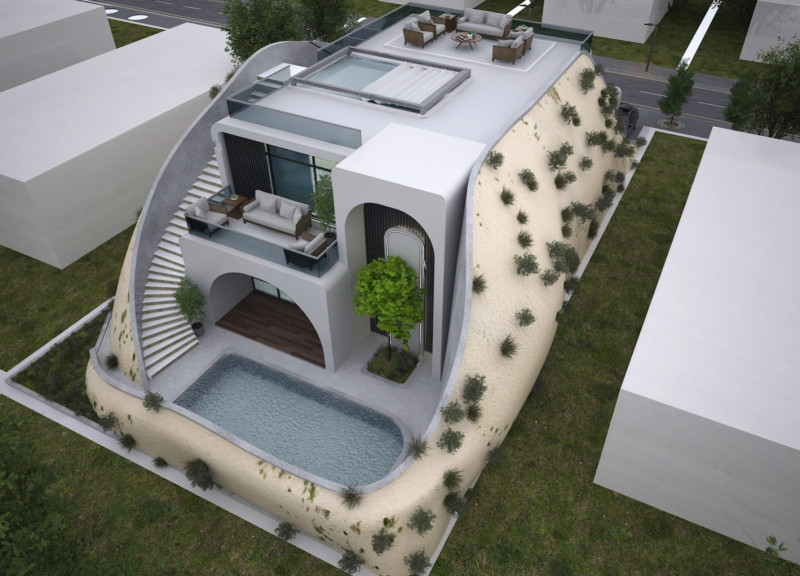5 key facts about this project
At the core of this architectural design is a clear understanding of its geographical context. Located in [insert geographical location], the project takes advantage of the area's unique characteristics, incorporating local materials and architectural traditions that ground it within its cultural setting. The building's orientation maximizes natural light and harnesses prevailing winds, supporting energy efficiency and enhanced comfort within the interior spaces. This conscious alignment with the environment underscores the project’s commitment to sustainable architectural practices.
The material palette used throughout the project further reinforces its connection to the local context. A careful selection of materials such as reinforced concrete, low-emissivity glass, sustainable timber, and natural stone not only contributes to the durability and longevity of the structure but also creates a distinctive visual language. The interplay between these materials is thoughtfully executed, crafting a façade that is both modern and reflective of historical influences. Large glass windows punctuate the exterior, establishing a sense of transparency and openness, while textured wood and stone elements provide warmth and a tactile quality that enhances the user experience.
The spatial organization within the building promotes versatility and fluidity. Open-plan layouts allow for seamless movement between different areas, facilitating interactions among users. This design philosophy emphasizes communal spaces that encourage social connections while still offering private nooks for contemplation and retreat. The strategic arrangement of these spaces is evident in areas like [insert specific examples, e.g., community lounges, shared workspaces], which are designed to foster collaboration and connection among inhabitants.
In addition to functional considerations, the project introduces unique design approaches that set it apart. Innovative features such as green roofs or rainwater harvesting systems illustrate the architect's commitment to sustainability and environmental stewardship. These elements not only enhance the ecological performance of the building but also serve as educational tools, encouraging users to engage with and consider their environmental impact.
Landscaping complements the architectural design by weaving together indoor and outdoor spaces. Thoughtful landscape design incorporates native plants and community gardens, creating vibrant outdoor areas that soften the building’s edges and encourage interaction with nature. These landscapes provide spaces for recreation and relaxation, allowing occupants to enjoy the natural beauty of their surroundings while reinforcing the relationship between the built environment and nature.
In essence, this architectural project serves as a model for how modern design can be both functional and contextually sensitive. The careful consideration of materials, space, and environmental strategies creates an engaging environment that meets the diverse needs of its users. As you explore the project presentation, delve into the architectural plans, architectural sections, and architectural designs to gain a deeper understanding of the ideas that shaped this endeavor. Each element contributes to the overall narrative of the project, offering insights into how architecture can respond to and enrich its community.


























